'We deserve better.' OKC neighborhood fights against decades of environmental injustice

- Oops!Something went wrong.Please try again later.
Residents on the northeast side of Oklahoma City don’t have to look far to see an industrial site, or their lingering scars.
Smoke stacks jut out of manufacturing facilities on the not-too-distant horizon, piles of car scraps fill lots within a nearby recycling plant, abandoned buildings dot the area, and both operational and inactive oil derricks are scattered throughout neighborhoods. Residents still remember the sites that were found to contain toxic waste, the years-long processes to clean them up and see the still-empty properties as reminders of a harsh history.
Some neighborhoods have been standing up against the physical impacts of nearby industries, like the explosions in the JFK neighborhood and the foul odor of a saltwater disposal well in the Martin Luther King Jr. neighborhood.
Zenephon Warrior has called northeast Oklahoma City his home for 55 years, and said he has watched as things get "dumped" in the area that no one else wants in their neighborhood.
Now, as another industrial business considers opening on NE 23, generations of concerns and memories of environmental injustices have come to the surface.

The city council recently heard from Arkansas-based company Medical Waste Services, a family-owned business, which owns property on NE 23 and hopes to open a medical waste transfer station there.
The company has tried to assure residents that the station would pose "virtually no risk" to their health, co-CEO Justin Methvin said. But northeast Oklahoma City and Forest Park residents are concerned it will be a setback for the community that has long been the city's dumping ground for waste and hazardous industries.
With cleanup attempts ongoing and redevelopment happening through city programs and local entrepreneurs, residents say operating this transfer station contradicts their revitalization efforts.
“I just think we deserve different,” former state Sen. Connie Johnson, a Forest Park resident, told The Oklahoman. “I think we deserve better than just being a repository for things that nobody wants to put anywhere else in the city.”
The property in question is on NE 23 just west of Coltrane, a roughly 8-acre tract the company, Medical Waste Services, would need to rezone to a higher industrial level for their business.
The medical waste would be in sealed containers and would not be disposed of or treated on the property. But it's not reflective of the community’s desired trajectory, multiple residents told the city council and The Oklahoman.
Methvin said the company still is evaluating its options after receiving feedback from the community. Methvin said he was not aware of the area's history or how the neighbors might respond but that he previously has not seen pushback from residents against his transfer stations.
In northeast Oklahoma City, residents have hope for the future. But to get there, they say the city, as well as outside developers and entrepreneurs, must acknowledge the past.
Discriminatory history in northeast Oklahoma City
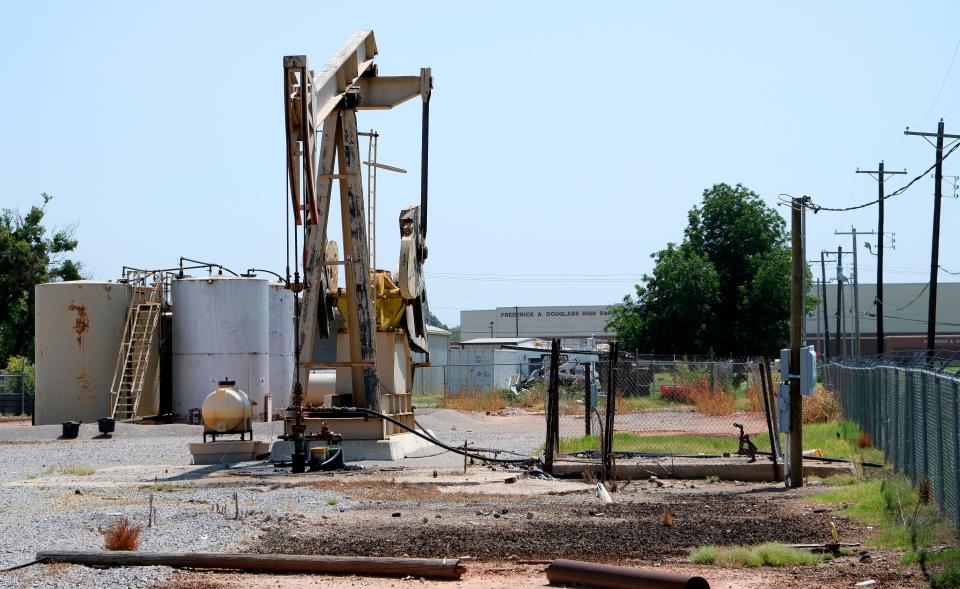
Black and minority communities across the nation have long been subject to living in the least desirable parts of town, living near bothersome and at-times dangerous industrial realities and struggling to recover from decades of discrimination and disinvestment.
The story of how northeast Oklahoma City got to this point is not a simple one, said historian Bob Blackburn, who served as the executive director of the Oklahoma Historical Society from 1999 to 2021.
It’s a story of oil discovery, a wild river and racism.
Black residents of Oklahoma City initially lived in three districts either near the trail tracks or the periodically flooding river. When they began trying to move into other areas, like all-white neighborhoods, there was pushback.
In 1915, Blackburn said, Oklahoma City leaders passed an ordinance making it illegal for people of color to live north of NE 8 on the east side of the tracks, and white people could not live south of the same street.
Such practices were declared unconstitutional, but de facto segregation continued in the Oklahoma City metro area through deed covenants and ostracization, Blackburn said.
Despite this discrimination, neighborhoods in northeast Oklahoma City still found ways to thrive, and during the 1920s the area was a hub for Black culture and commerce, affectionately known as the “Deep Deuce,” or Deep Second.
But the restrictive and discriminatory regulations eventually hollowed out the African American enclave of northeast OKC, when nationwide integration efforts in the 1950s collided with the city's years-long unwillingness to let go of racist laws.
Environmental impacts from increased oil extraction left scars throughout northeast Oklahoma City, and the community's self-sufficiency was further hampered by Urban Renewal, when government initiatives for public works projects in blighted areas resulted in contentious losses of property.
How discovery of oil impacted the area
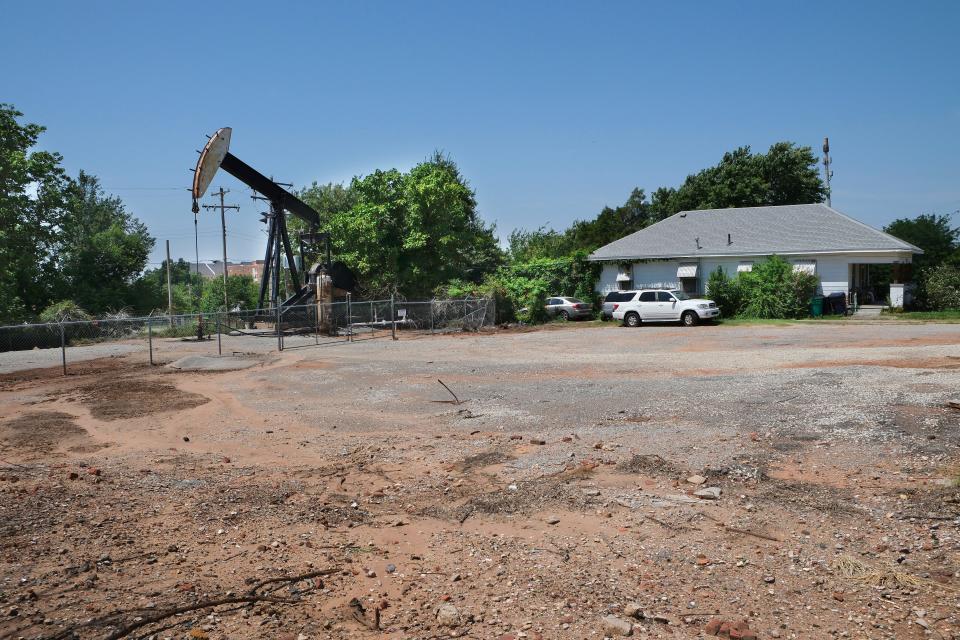
But how did the northeast come to be home for OKC’s Black community in the first place? Blackburn said the area was less desirable for residential use due to the hazardous, flood-prone North Canadian River, as well as the Oklahoma City oil field discovered in 1928.
It was the first time oil had been discovered in an urban area of the state, and both state and city officials struggled to enforce the limits they tried to place on the industry.
City officials determining zoning saw the need to keep drilling, production and storage away from residential areas but gave priority to white neighborhoods, Blackburn said. Minority areas were seen as “not quite as concerned about that,” thanks to “the general racism of the time,” Blackburn said.
Before the creation of the Environmental Protection Agency in 1970, Blackburn said with the lack of industrial regulation “it was pretty much the Wild, Wild West.”
So, whether it was a landfill accepting hazardous waste, or an oil refinery disposing of its own toxic sludge on-site, mistakes were made in these processes that were detrimental to the environment.
Of the five Oklahoma City sites deemed by the Environmental Protection Agency as contaminated by toxic waste, also known as Superfund sites, four of them are located on the northeast side.
These sites were cleaned up and removed from the national priorities list between 1996 and 2013.
Despite the community’s hope to see beautification projects and positive developments that can reinvigorate the area, Warrior said the proposed medical waste transfer station is "on par” with decisions made in the past the community is hoping to move away from.
“We've met with the people that are operating this particular company and know that there's a need for that,” Warrior said. “But … it seems like this kind of stuff always gets dumped on the east side of Oklahoma City.”
Who is the medical waste company?
The property eyed for a medical waste transfer station at 3903 NE 23 sits almost at the corner of NE 23 and Coltrane, just south of the Forest Park township.
The property — consisting of a home, an abandoned auto-shop and a larger structure in the back — is owned by Methvin Holdings, a company owned by Mark Methvin, Justin Methvin's father. The station would be operated by Medical Waste Services, which has existed since 2009. Both companies are based out of Harrison, Arkansas.
The Oklahoman's attempts to reach the residents of the home on the property were unsuccessful.
Jason McAnulty, operations manager for the company, told city council Medical Waste Services operates another transfer station on SE 39 in Oklahoma City. The other Oklahoma City property is next to a home, McAnulty said, but is also amid a much denser series of industrial businesses.
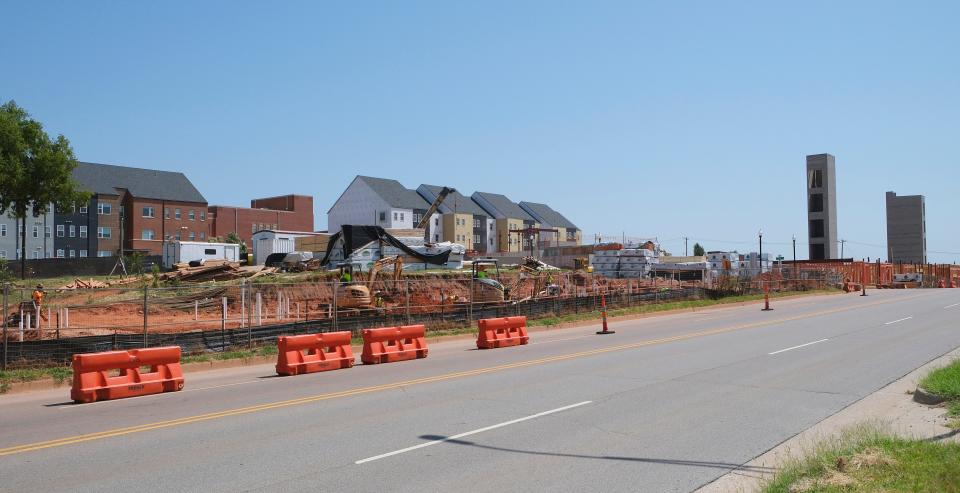
The NE 23 property was chosen for its size and proximity to Interstate 40 and Interstate 35 for the truck drivers who are coming from Arkansas, he said.
Any risk to neighbors is mitigated by the regulations on the industry and how the waste is required to be handled, Methvin said. The Oklahoma Department of Environmental Quality regulates medical waste in Oklahoma.
The medical waste would be picked up from businesses like hospitals, nursing homes, doctors and dentist offices, Methvin said. It would be sealed in a bag, then a sharps container, then carried in a box truck to the property, and then transferred into a tractor-trailer. This transfer would take place in a 60-by-90-foot fenced in area, about once a day.
"Basically, there is three levels of containment between the waste and open air," Methvin said.
Once it's loaded in the tractor-trailer, it will be driven to the company's disposal site in Arkansas.
He also added his company is not permitted to haul liquid or hazardous waste.
OU researchers target NE neighborhood for environmental studies
In the past few years, researchers and students with the University of Oklahoma sought to determine just how bad the conditions in northeast Oklahoma City had become.
Multiple OU students across several environmental studies capstone courses worked to document the experiences and perspectives of homeowners with the John F. Kennedy Neighborhood Association, a group of residents advocating for a historically Black neighborhood in northeast OKC.
The students reported numerous issues with environmental hazards for neighborhood residents, including problems with water quality, air pollution and health conditions.
The neighborhood’s proximity to two scrapyards means residents consistently endure explosions when the metal recyclers have failed to adequately remove dust in the shredding equipment, or they have not emptied vehicles of fuel in tanks. These explosions rock the homes in JFK, leaving cracks in the walls.
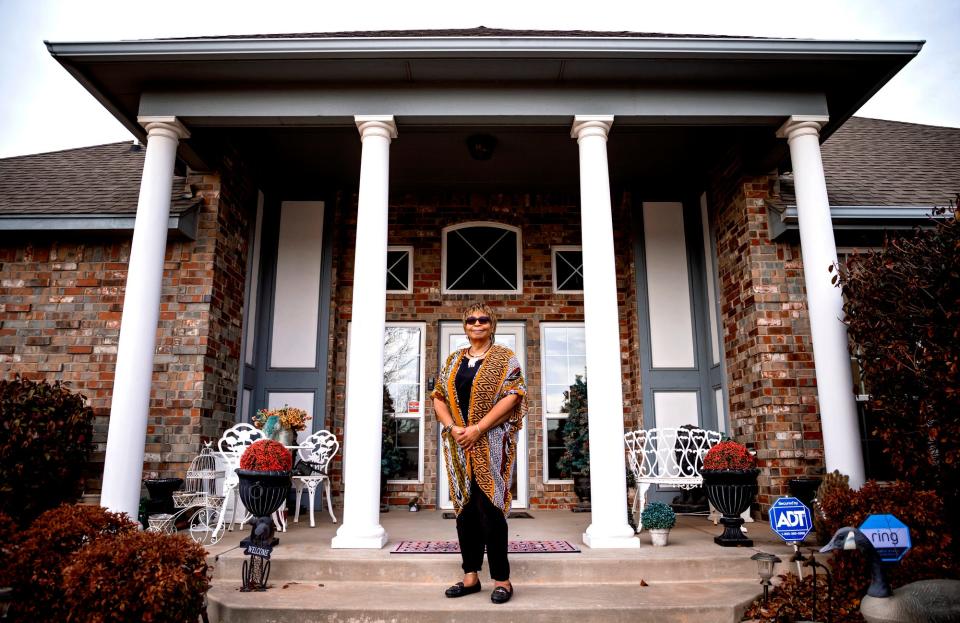
"There must be regulations created to protect JFK residents from the toxic air pollution and the hazardous risk caused by these frequent industrial fires and explosions," a study from OU students earlier this year found. "Otherwise, health and quality of life are severely compromised."
Assistant City Manager Aubrey McDermid told The Oklahoman in 2021 that if the scrapyards or something similar were attempting to rezone land near residential areas today, the city’s comprehensive plan would cite land use compatibility concerns for noise and odors.
Denyvetta Davis, a longtime JFK resident and the president of the NEOKC Neighborhood Coalition, said air pollution from other surrounding industries have left noticeable issues.
“We get dust, a film that shows up on our mailboxes and on our cars, our leaves and trees,” Denyvetta Davis told The Oklahoman. “We have smoke coming from Citgo, which is on Martin Luther King, there’s a daily smoke. There’s a constant humming noise that comes from Citgo. There’s a smell of sulfur, there’s a smell of natural gas, and so on.”
Denyvetta Davis and various northeast Oklahoma City residents have met with city leadership, requesting substantial changes be implemented to improve their quality of life.
So far, a wall has been constructed between the Derichebourg Recycling facility and the JFK neighborhood to lessen the impact of sound waves from explosions from the company plant. And in 2014, the city council limited the scrapyard operations from 7 a.m. to 7 p.m. in an effort to end pre-dawn explosions.
Dr. Hongwan Li, an assistant professor in occupational and environmental health at OU, began a study this summer on indoor air particulates in the neighborhood to determine what further action plans could be taken to resolve the situation.
Researchers heard consistent complaints from JFK residents about odors from possible pollution infiltrating their homes, so Li’s team asked residents to leave sensors inside their houses to measure the indoor air quality.
“They can smell it — they feel they can smell some organic gases in the air, which is part of the contaminants,” Li said. “If we can distribute the sensors in the neighborhood and understand maybe which corner smells the worst the most, that may be helpful for us to learn better for how those gases transport in the air.”
But Denyvetta Davis knows more needs to be done, and she said the residents are increasingly less and less willing to wait for help from the city.
“If the city wants to do more? Great. But we’re not waiting, we’re not depending on them, we’re just doing what we can on our own.”
City has attempted cleanup efforts over the years
A common recollection from those who have lived in the community for decades is issues with the northeast sewage treatment plant.
It's since been resolved, but the stink hasn’t fully lifted from memory.
“Growing up on this side of town, all of us remember, on Friday nights at the football games when the city would release the sewage right over there,” Johnson said. “And everybody had to sit through the stench. And everybody remembers that. I mean, that was environmental injustice, because we had to just breathe it in.”
The sewage treatment plant ended up on the northeast side because it was downstream, Blackburn said. Water was treated as it was coming into the city for drinking, and then treated wastewater was put back into the North Canadian River as it meandered out of the city.
Blackburn said Oklahoma City and cities across the nation had to reckon with implementing better standards for their sewage treatment when the EPA came around.
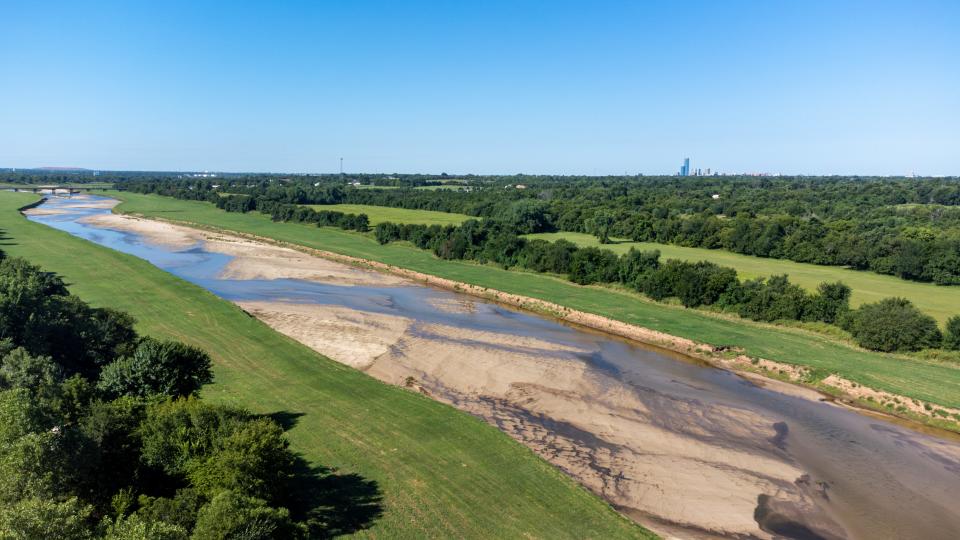
But the treatment plant on NE 4 long-plagued northeast residents and played a role in keeping improvements from coming to the area, Blackburn said.
“It’s an environmental hazard that (affected) the river downstream,” Blackburn said. “So you're not going to get a lot of housing development, you're not going to get a lot of shopping malls — even though it's the prettiest part of the county — partly because of that.”
Oklahoma City neighborhoods: A brief history of … JFK neighborhood
Oklahoma City established its Brownfields program after a series of meetings between city staff and northeast residents focused on the need to clean up Superfund sites and address other environmental issues in the area.
The Brownfields division is a revolving loan program funded by federal grants to help developers clean up underused or abandoned properties that have been previously contaminated.
Much of the Brownfields cleanups are within a federally designated area targeted for neighborhood revitalization, which encompasses the city’s core. Most of the sites end up being on the south and northeast sides of town, Brownfields Planner Amanda Alewine said.
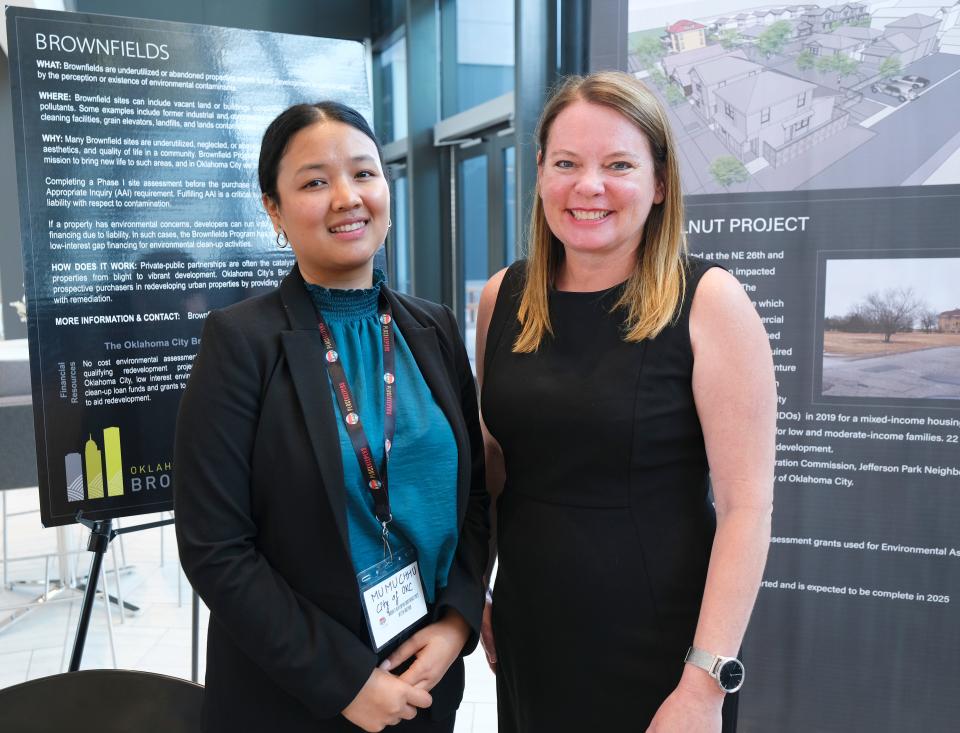
Alewine said she doesn’t necessarily know that the northeast side of the city has more industrial pockets of contamination than other parts of town, but that there’s more attention on it now because of how “neglected” the area was for decades.
“The northeast side is dealing with years and years of disinvestment,” Alewine said. “They're long overdue for investment. And the redevelopments that they're working on now, I think, is bringing light to (environmental contaminants) … What in other parts of the city has happened over the last 20 years, it's just now happening.”
What effect would medical waste have on residents?
As Medical Waste Services attempts to begin business, they first must receive the blessing of the city council to set up on a property near a park for its environmental quality permit, in addition to rezoning the property.
Before going through the Planning Commission to obtain a higher industrial zoning to operate the business, the company sought this environmental approval from the city council considering the nearby Diggs Park.
The council deferred offering the statement, instead asking Medical Waste Services to go through OKC’s zoning process. The city council would have the final say on whether the property is rezoned, and then could vote again to approve the environmental statement.
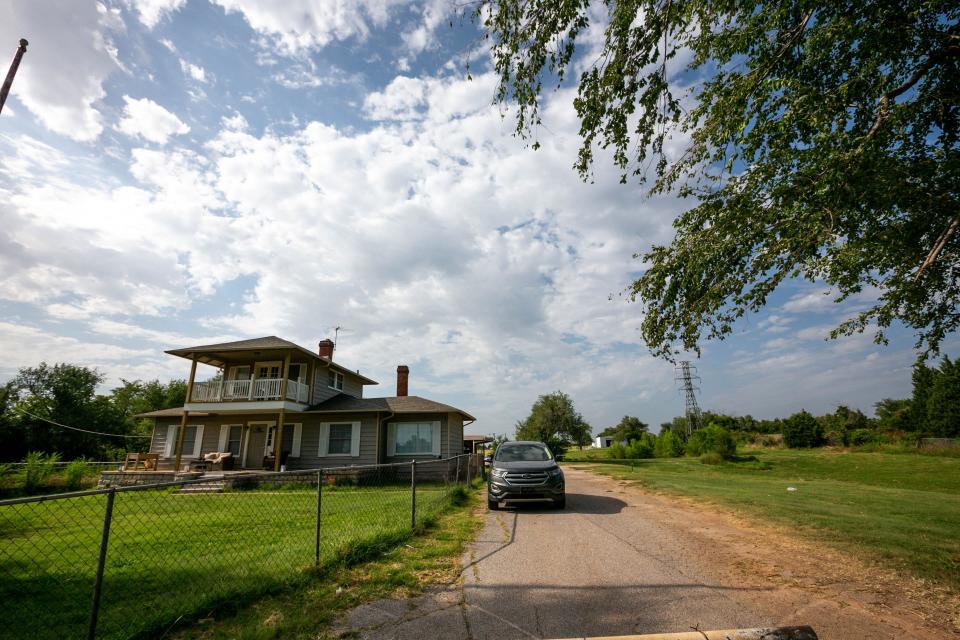
Councilwoman Nikki Nice, who represents the area, said she hopes the proposed station will “go away.”
“The neighbors were … very adamant about why they don't want this within their proximity of their neighborhood,” Nice said. “Which is rightfully, I mean, anybody understands that. Anybody understands not wanting a waste transfer station to be housed around them.”
Because the waste is in sealed containers and would not risk being airborne, Parks Director Melinda McMillan-Miller said her department did not have any concerns about how it would affect Diggs Park.
Nice said the fact that the containers would be sealed does not alleviate her concerns or change her mind on the compatibility levels of this facility in her community. She said it would be better suited closer to the landfill.
“These are things that continue to happen in these parts of our community,” Nice said. “Whether it be something that's contained or not, these are the things that continue to find their way within Black and (other minority) communities.”
Forest Park Vice Mayor Darlene Davis said she wants to see “viable, upscale businesses” brought to the area.
“We deserve an OnCue, we deserve coffee shops, we deserve grocery facilities, we deserve a hospital,” Darlene Davis said. “But we do not deserve a medical waste transfer facility.”
How residents, developers are changing the landscape of NE OKC

A group of local activists and entrepreneurs are determined to bring lighter, growth-oriented developments that residents have long desired to northeast Oklahoma City.
Dr. Quintin Hughes, a graduate of the University of Oklahoma, was intrigued when city leaders and investors began announcing ideas to redevelop parts of northeast Oklahoma City. But he noticed an issue immediately: The developers had little to no ties to the east side, and there was hardly any community input into the process.
“Our group was feeling like we were positioned to not do much more than just check a box in relation to the process,” Hughes told The Oklahoman. “The developers were not really willing to share much about it or let us know what’s good, or if (what) looks bad, and we didn’t really have much influence and power.”
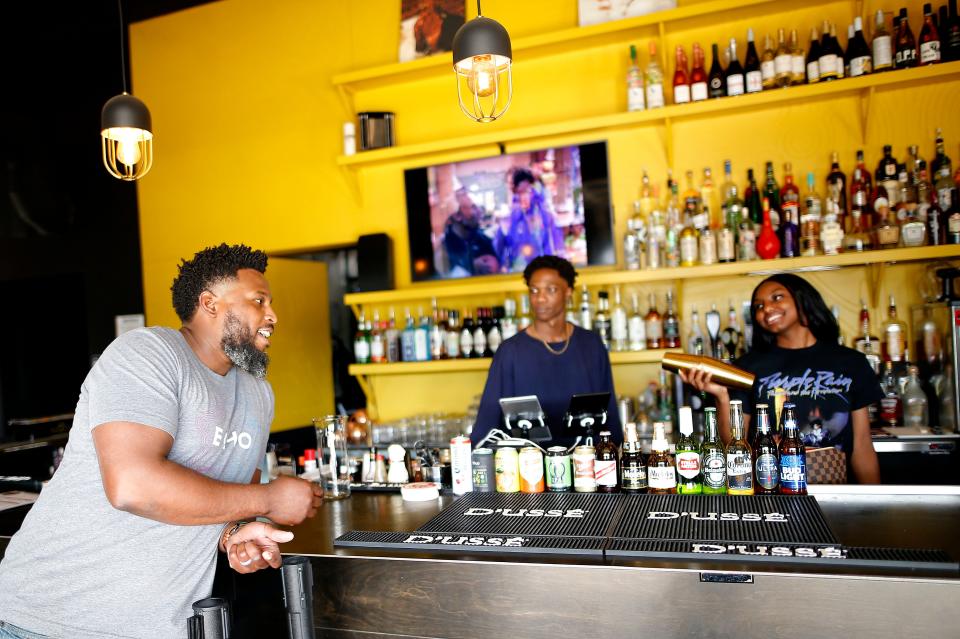
More: Northeast OKC residents say no thanks to donation of land for new county jail
Hughes and some like-minded residents wanted “to do more than just check boxes,” and decided to create their own economic development projects. This gave rise to Northeast Oklahoma City Renaissance Inc., an organization devoted to community-based real estate development of the area.
DeAndre Martin, another graduate of OU and the program director for the NE OKC Renaissance, helped Hughes start a real estate development training program called PlaceKeepers, focused on equipping and connecting minority entrepreneurs and small business owners with revitalization efforts in the area.
Developers and businesspeople who received PlaceKeepers training have gone on to partner in various projects for northeast Oklahoma City, including renovations of the Marcus Garvey Leadership Academy. The old school building will be converted into senior housing with surrounding affordable housing townhomes, Martin said.
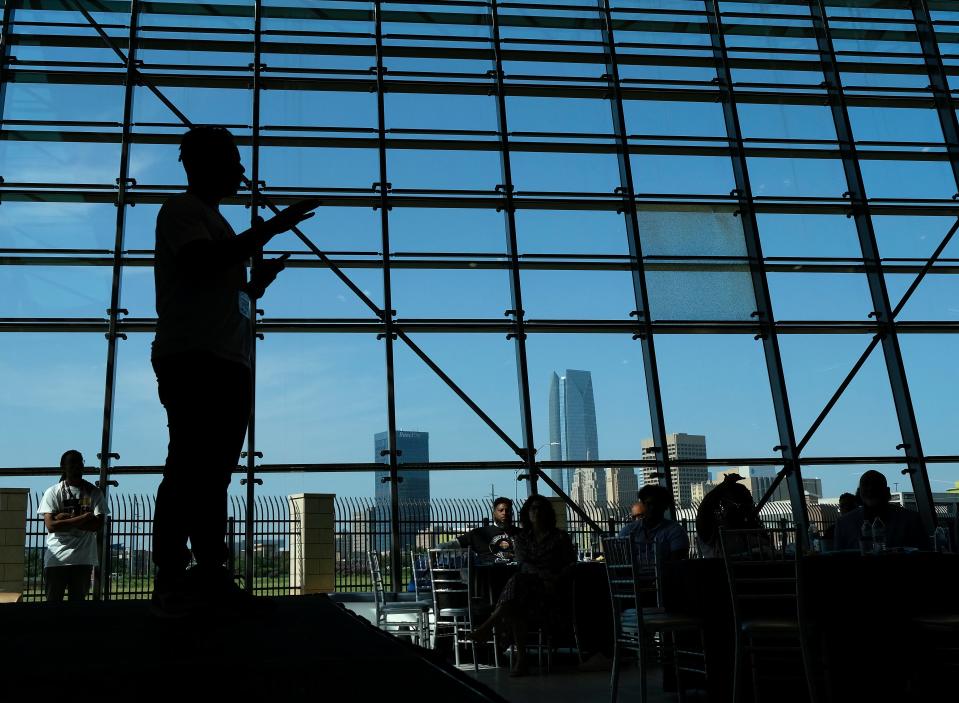
Other plans include a duplex project on NE 16, where PlaceKeepers also will work with the Urban Renewal Authority to construct townhouses and single-family homes.
It’s all part of the NE OKC Renaissance’s hope to create the “21st Century version of Deep Deuce,” Martin said.
Martin, Hughes, Sandino Thompson and numerous others believe that better positioning northeast Oklahoma City to be more appealing for private sector development and business opportunities is the best way to reverse the perception and correct the history for the neighborhoods.
Numerous real estate developments have emerged within the past decade in northeast Oklahoma City. A major boost to the area has been the EastPoint project on NE 23, encompassing a health clinic, a grocery store, a pizza parlor, a coffee shop, a breakfast restaurant and a patio bar.
Partners also are developing an ambitious hotel concept called Hamlin Hotel, set to be financed largely by New Market Tax Credit allocations and located directly across from the EastPoint Market. The boutique hotel, likely to begin construction in late 2023, is expected to have 77 rooms, four stories, a retail incubator space, a ground-floor pool and a rooftop bar.
Other major investments have included a new Homeland grocer on NE 36 and Lincoln Boulevard; the neighboring Senior Health and Wellness Center, funded by MAPS; and the Willa D. Johnson Recreation Center at Douglass Park, funded by the 2017 bond package.
‘Shift economic interest to higher and better uses’

Thompson, who is leading the Hamlin Hotel development, told The Oklahoman that, while current city leadership are not the source of the northeast's woes, they “definitely inherited the legacy.”
“That legacy has existed for 60 or 70 years, and so when we see things like the medical waste facility and those kinds of things, I know that all of the circumstances might not be the same, but it really just reminds us of that sort of legacy,” Thompson said.
Thompson has inherited a legacy of his own. He traces his activist roots back to his parents, who were taught by civil rights leader and schoolteacher Clara Luper, and his grandmother, who was instrumental in opening the Mary Mahoney Memorial Health Center.
Related: Historically Black neighborhood in Oklahoma City finds no relief from decades of explosions
“My personal perspective is to try and build on the foundation that those before me really laid out,” Thompson said. “I grew up here in the ‘80s and the ‘90s, and we have had a unique opportunity in the last 15, 16 years to really move things forward.”
Thompson is adamant that transparency from city officials continue, as he believes the construction of a medical waste transfer station would turn the clock back on improvements in the area he and others have worked hard to make in the past several years.
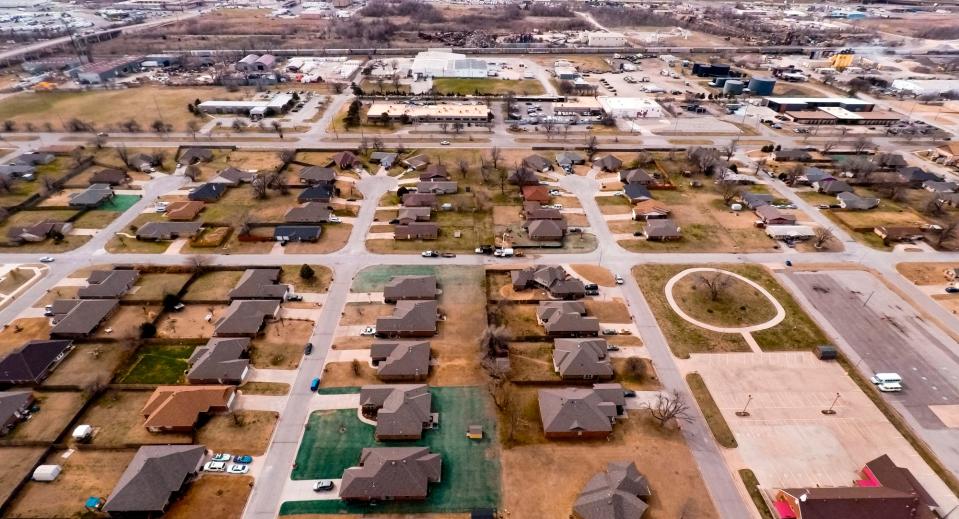
“We want to align those with the private sector looking at actual investment into these spaces and places, to develop some of these higher uses,” he said. “That way, we shift that economic interest and economic expectation to higher and better uses, instead of lower, more detrimental uses.”
Denyvetta Davis also is hopeful for the future of northeast Oklahoma City, talking with pride about new improvements being made in the JFK neighborhood, where she has spent 16 years of her life.
But she said she knows if current longtime residents cannot compel city leadership to address the environmental situation more quickly, younger neighbors might opt to simply leave the area and plant roots elsewhere.
“If we don’t solve it, I don’t know what will happen to the neighborhood, because where my generation would tolerate a lot, the younger generation may not,” Denyvetta Davis said. “They may just say, ‘Forget this.’ They may just leave the community. My generation will stay and try to do what we can, but (the next generation) may not.”
This article originally appeared on Oklahoman: OKC neighborhood fights against decades of environmental injustice

